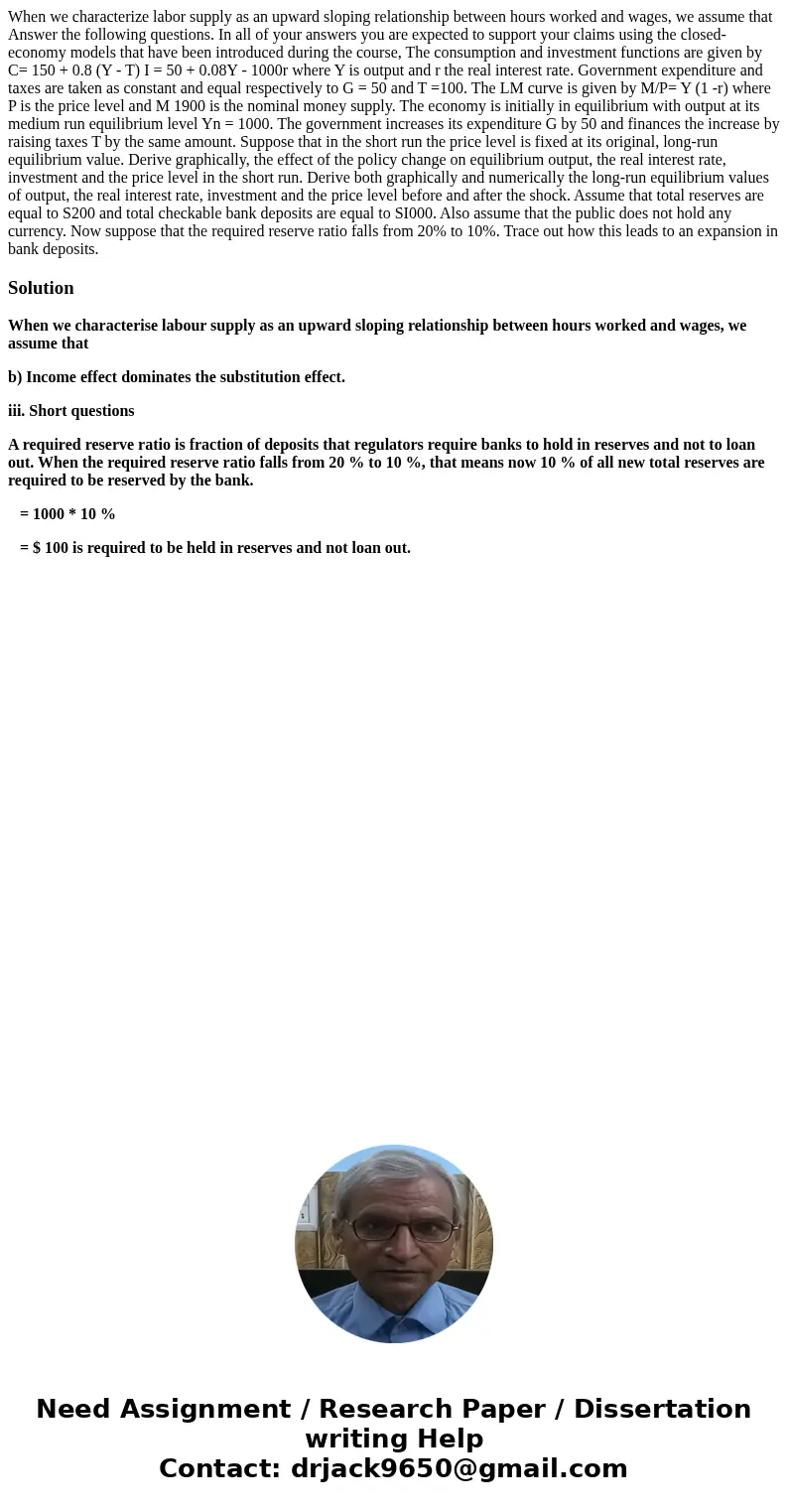When we characterize labor supply as an upward sloping relat
When we characterize labor supply as an upward sloping relationship between hours worked and wages, we assume that Answer the following questions. In all of your answers you are expected to support your claims using the closed-economy models that have been introduced during the course, The consumption and investment functions are given by C= 150 + 0.8 (Y - T) I = 50 + 0.08Y - 1000r where Y is output and r the real interest rate. Government expenditure and taxes are taken as constant and equal respectively to G = 50 and T =100. The LM curve is given by M/P= Y (1 -r) where P is the price level and M 1900 is the nominal money supply. The economy is initially in equilibrium with output at its medium run equilibrium level Yn = 1000. The government increases its expenditure G by 50 and finances the increase by raising taxes T by the same amount. Suppose that in the short run the price level is fixed at its original, long-run equilibrium value. Derive graphically, the effect of the policy change on equilibrium output, the real interest rate, investment and the price level in the short run. Derive both graphically and numerically the long-run equilibrium values of output, the real interest rate, investment and the price level before and after the shock. Assume that total reserves are equal to S200 and total checkable bank deposits are equal to SI000. Also assume that the public does not hold any currency. Now suppose that the required reserve ratio falls from 20% to 10%. Trace out how this leads to an expansion in bank deposits.
Solution
When we characterise labour supply as an upward sloping relationship between hours worked and wages, we assume that
b) Income effect dominates the substitution effect.
iii. Short questions
A required reserve ratio is fraction of deposits that regulators require banks to hold in reserves and not to loan out. When the required reserve ratio falls from 20 % to 10 %, that means now 10 % of all new total reserves are required to be reserved by the bank.
= 1000 * 10 %
= $ 100 is required to be held in reserves and not loan out.

 Homework Sourse
Homework Sourse